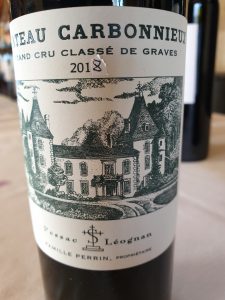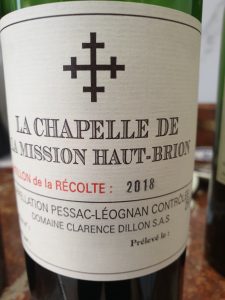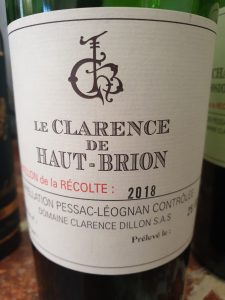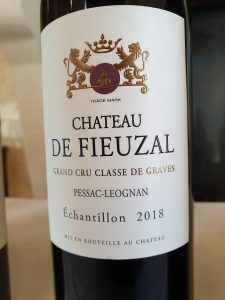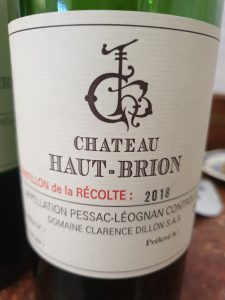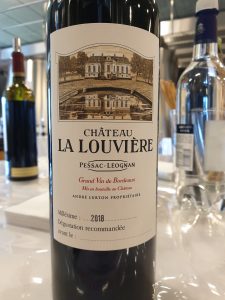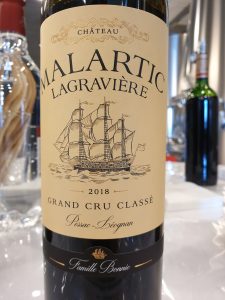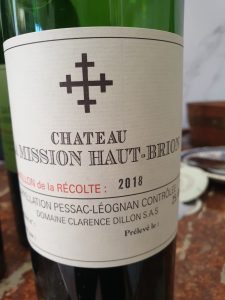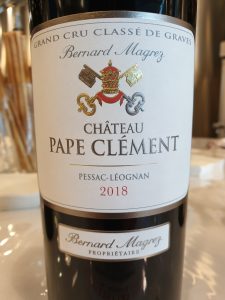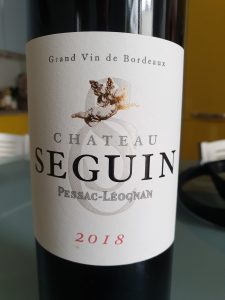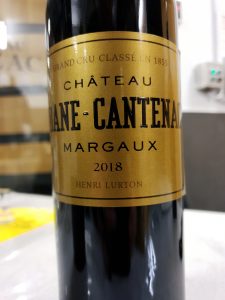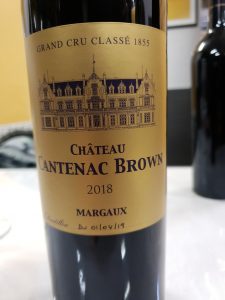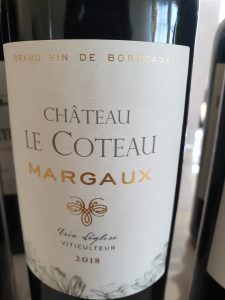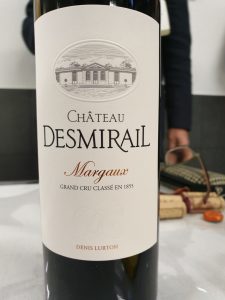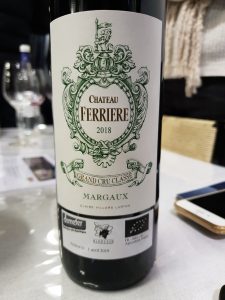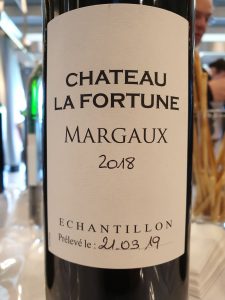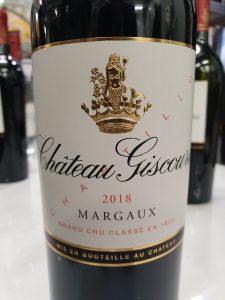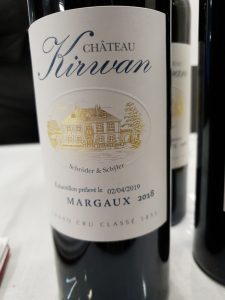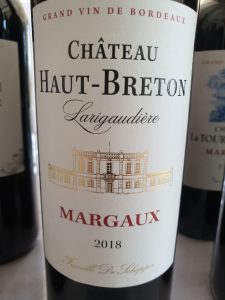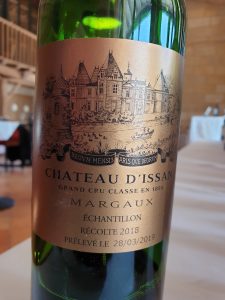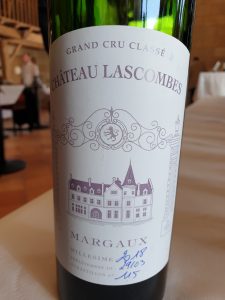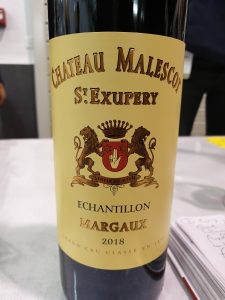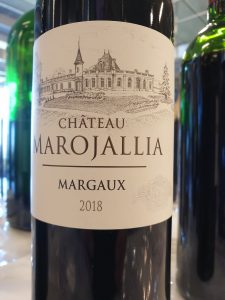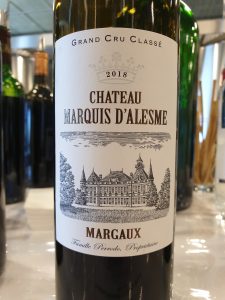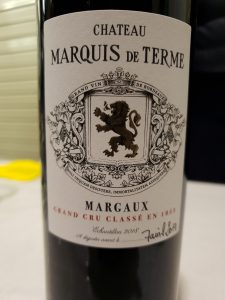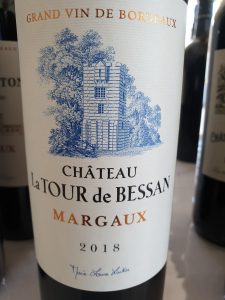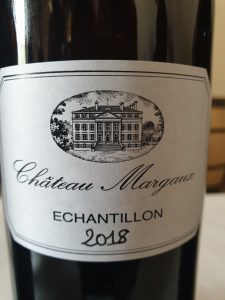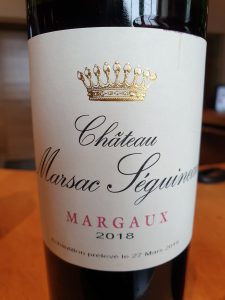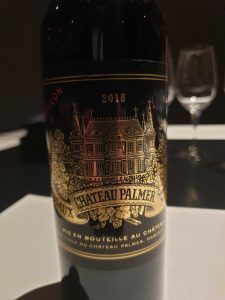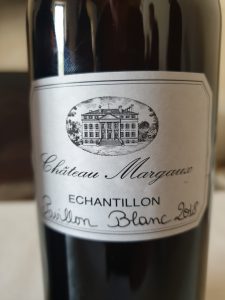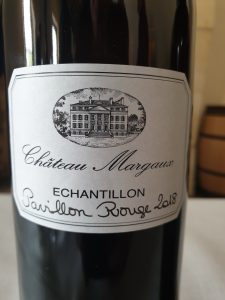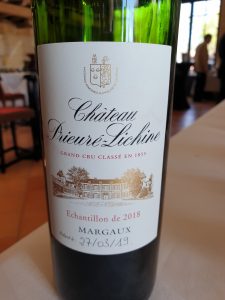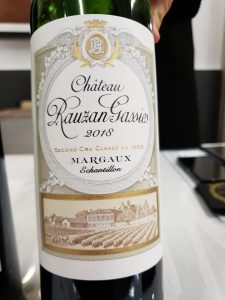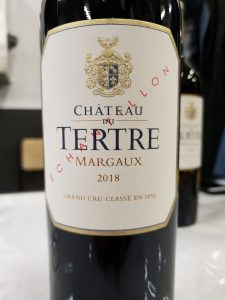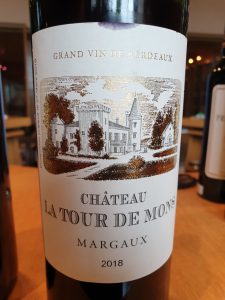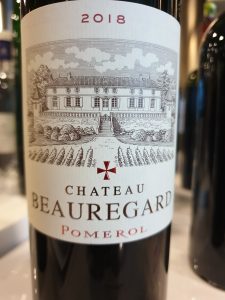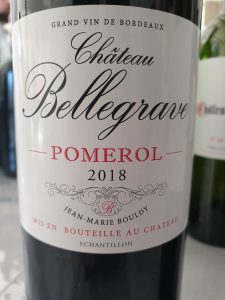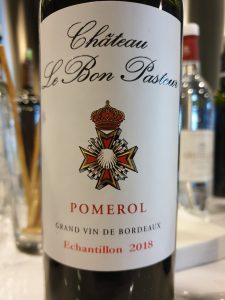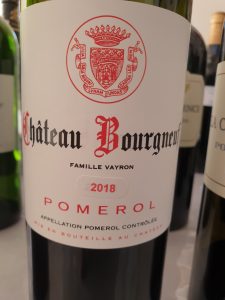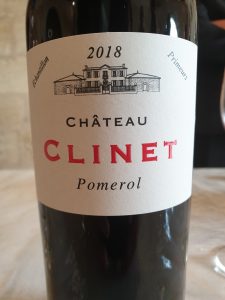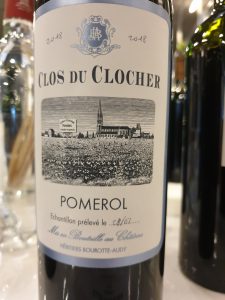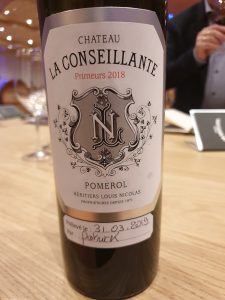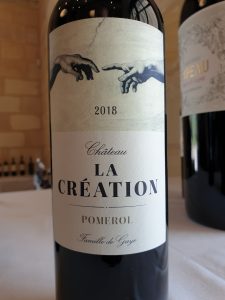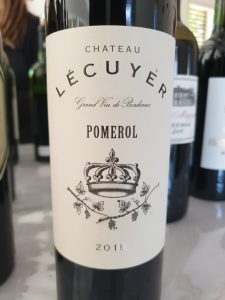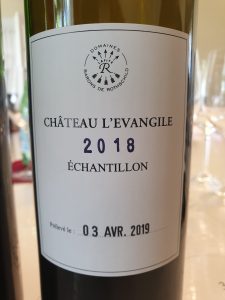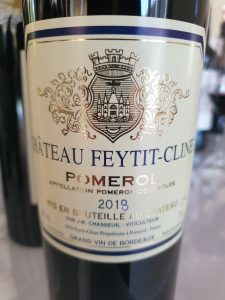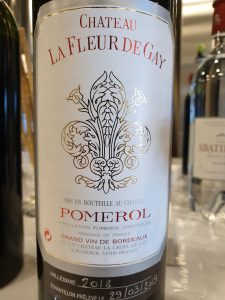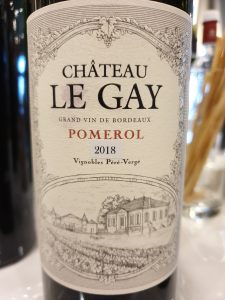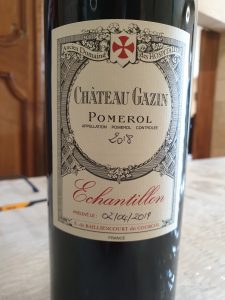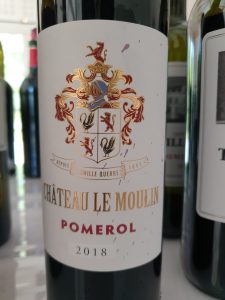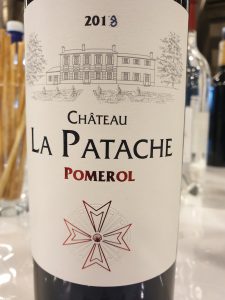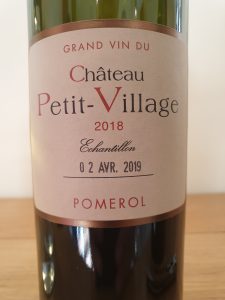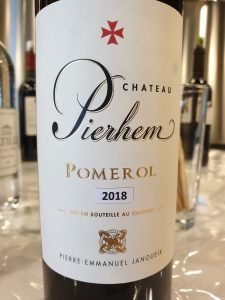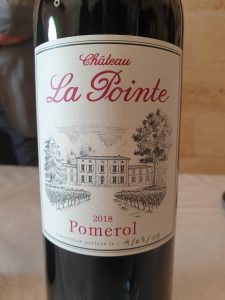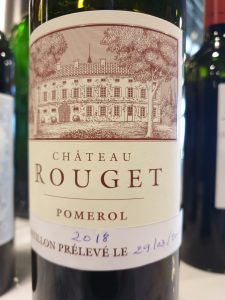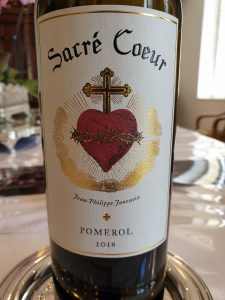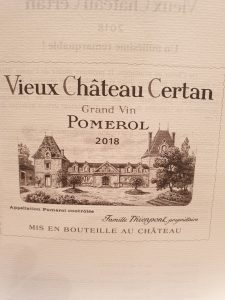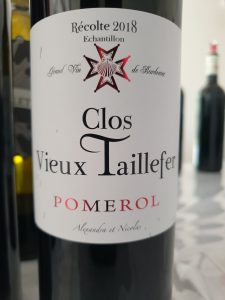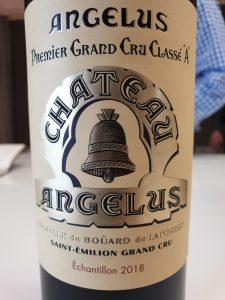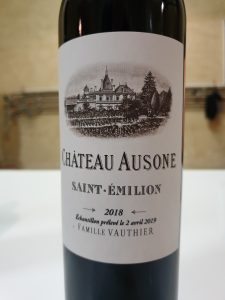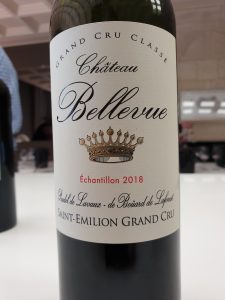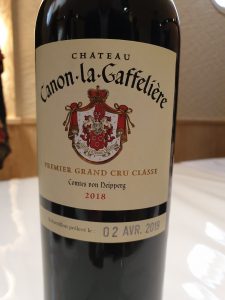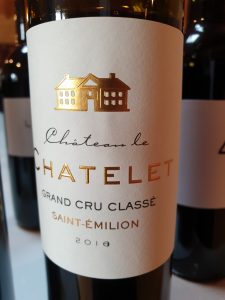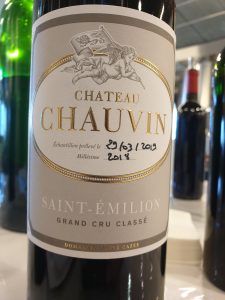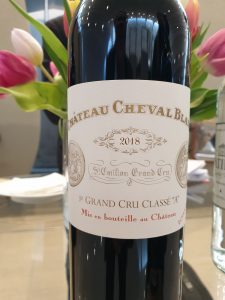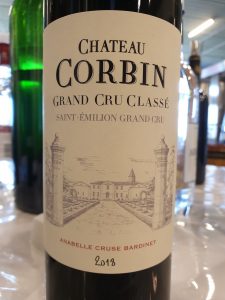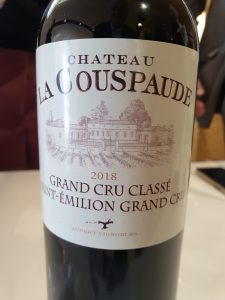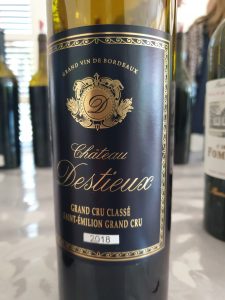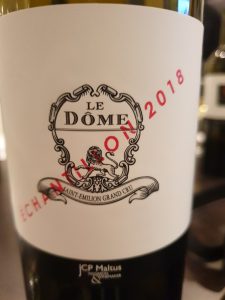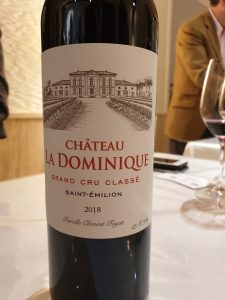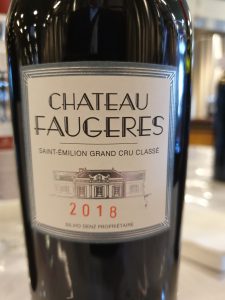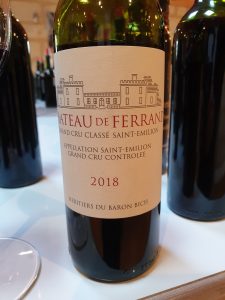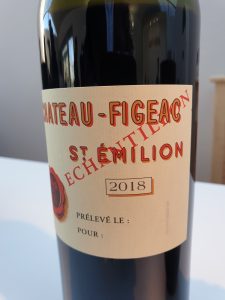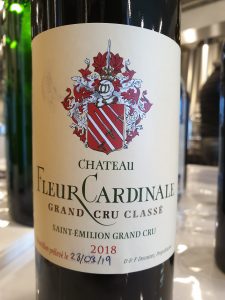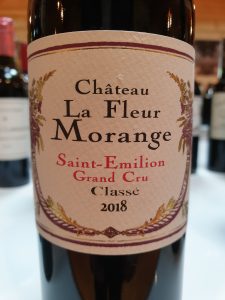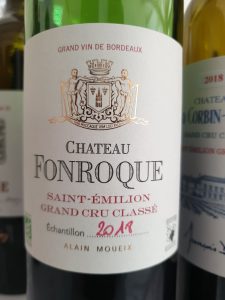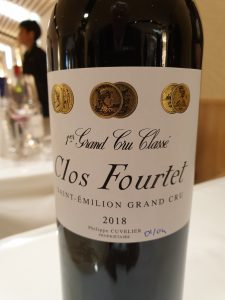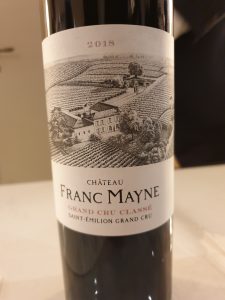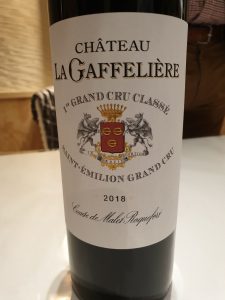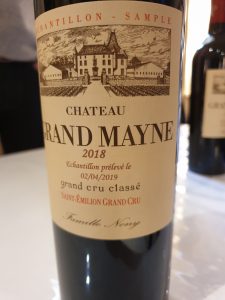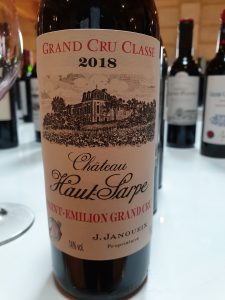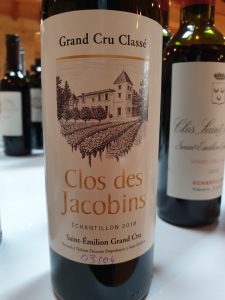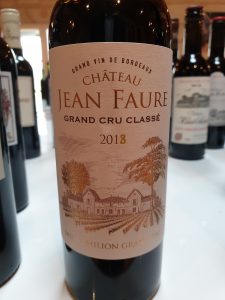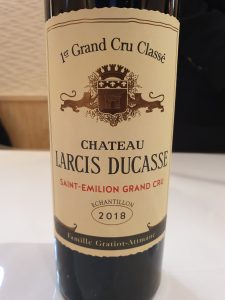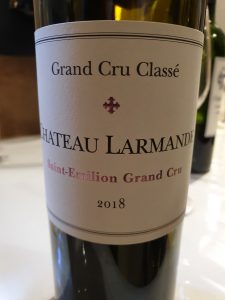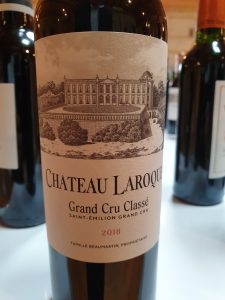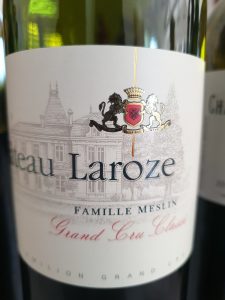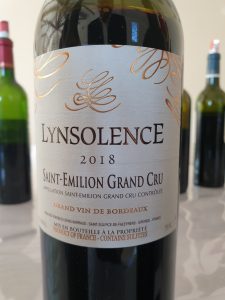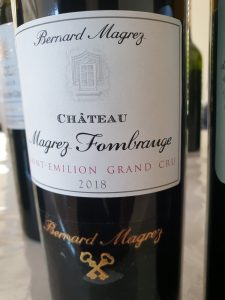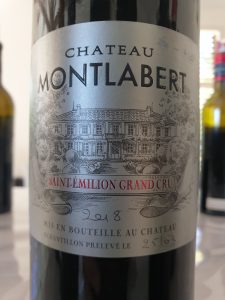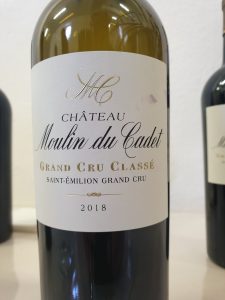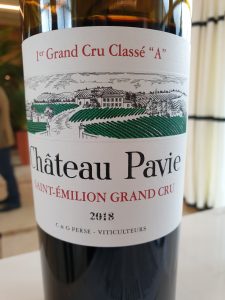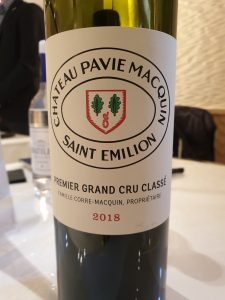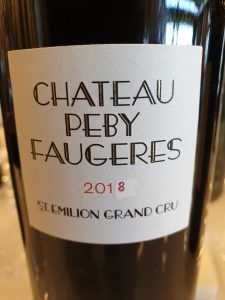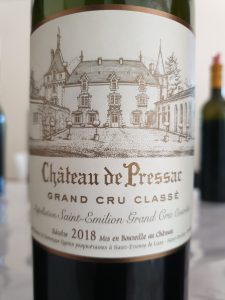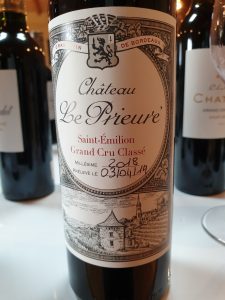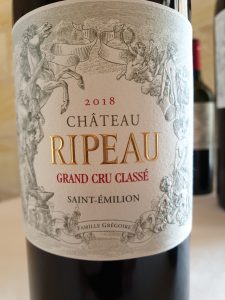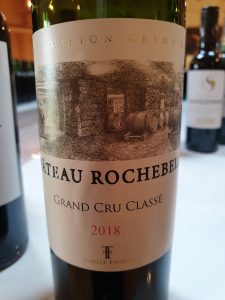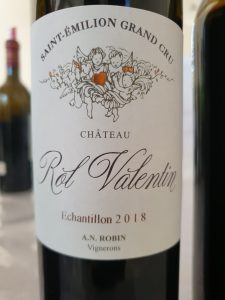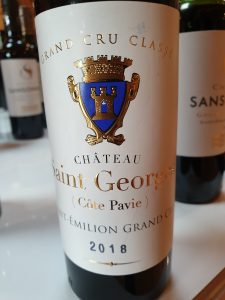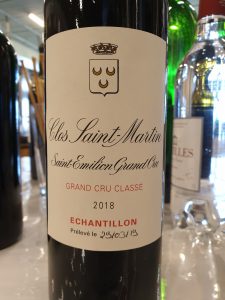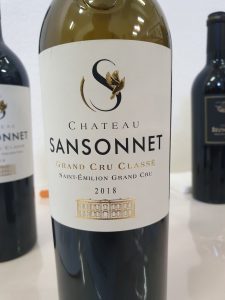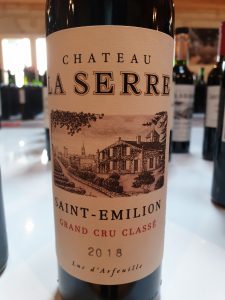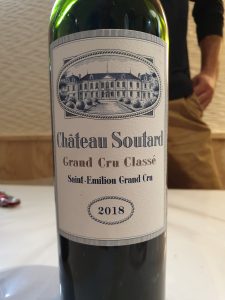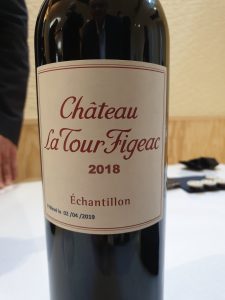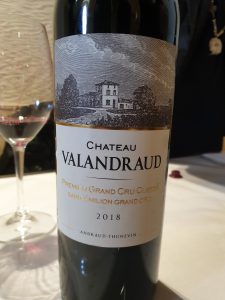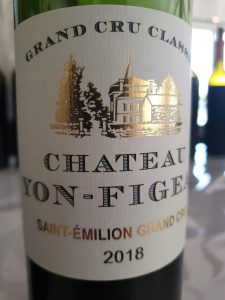PESSAC-LÉOGNAN
There are so many events and châteaux to visite during en primeur week that I was not able to fit in my usual stop at the Union des Grands Crus tasting in Pessac-Léognan this year. Therefore, my coverage is limited this year.
Carbonnieux
N: A bouquet that is reduced and not well-defined. Will undoubtedly improve with age.
P: Smooth and melts on the mouth to begin with, but weak on the middle palate, ending with strong oak – a little too strong for me – on the aftertaste. Needs revisiting. OK.
La Chapelle de La Mission Haut Brion
N: Slightly syrupy aromas with some cedar. Sweet and enticing.
P: Well-defined fruit going into a tangy aftertaste. Very classy, lacking just a little oomph and length to be catapulted to the very tip of the pyramid. Fine tannin and acidity. Very good.
Le Clarence de Haut Brion
N: Fresh and more ethereal than the second wine of La Mission. Fresh and not over-oaked. In fact, the oak is barely discernible. Faint herbaceous note.
P: Chunky and chewy, with oak showing, along with hints of tobacco. Svelte with beautiful development on the palate and tea tannin on the finish. Long aftertaste. Very good.
Fieuzal
N: Old-fashioned with odd metallic and even oyster shell overtones.
P: Mercifully, much better on the palate with tight-knit tannin, but the oak obscures this, as well as the fruit. Dry finish. Should improve over time and needs retasting at a later date. OK.
Château Haut Brion (white).
N: Some earthy, fresh mushroom aromas, as well as vanilla and lanolin nuances.
P: Soft, then the terroir and elegance come through, especially those qualities conferred by the gravelly soil. Very long aftertaste. Although over half Sémillon, this wine seems like the apotheosis of Sauvignon Blanc. Ageing may well change that impression. The length and power on the finish set it apart from, let’s say, a first-class Sancerre, but I find this not up to the standard of the red. Nevertheless, very good.
Château Haut Brion (red).
N: Cedar and “old library” bouquet. Very precise. Deep, fresh, mysterious cherry and stone fruit aromas , with vinification odors in the background.
P: Sweet, understated fruit. Spreads out on the palate seamlessly, suavely, and subtly. Great tension. Delicate with a velvety texture and new oak on the finish. Superb.
Château La Louvière (red)
N: Sweet fruit with some lead and a strong floral component. Delicate for sure.
P: Rich, mouthfilling, and reflecting the aromatics on the nose. Proudly displays its Left Bank origins. Good acidity and a long aftertaste showing fine tannin. This estate is looking up after somewhat of an eclipse. Very good.
Château Malartic Lagravière
N: Not terribly expressive now, but showing overtones of mocha, black fruit, and flowers.
P: Starts off by melting in the mouth, then goes on to reveal a very perfumed, pretty, feminine quality I often find in this wine. The aftertaste is more “virile”, giving the wine good balance between fruit, velvety tannin, and acidity. Very good.
Château La Mission Haut Brion (white)
N: Varietal Sauvignon Blanc aromas with a hint asparagus. Some cherry and vanilla notes along with mineral nuances.
P: Vanilla, caramel, and meringue. Great acidity, with less class, but more power than the Haut Brion blanc. Tremendous minerality on the finish. Great balancing act between power and delicacy. Very good.
Château La Mission Haut Brion (red)
N: Coiled and showing sheer class with discreet new oak. Reminds me of a great Médoc. Some chalkiness and fancy floral notes.
P: Medium weight with a tangy, long, and almost relentless aftertaste with great tannic texture. One for the very long haul. Tarry and candied black fruit flavors. Excellent.
Château Pape Clément
N: Fresh notes of forest floor and tobacco.
P: A treat from beginning to end. The extraction and barrel ageing are under control and the aftertaste is long, resonant, and aristocratic. Far more traditional than in the past and very much to my taste. Textbook Graves. Oak is strong, but the wine has enough character to support it. Excellent.
Château Séguin
N: Deep very pure fruit (raspberry, and especially blackberry) where Cabernet seems to define the bouquet. Some coffee and dark chocolate nuances.
P: Elegant rather than powerful with zippy tartness. Both extraction and barrel ageing have been done with the golden mean in mind. Great balance between fruit and tannin. Somewhat under the radar, this estate is worth discovering. Very good.
MARGAUX
Château Brane Cantenac
N: Earthy and brambly with good fruit and good toasty oak.
P: Excellent on entry, then drops a bit, but comes into its own with very classic, sophisticated tannins that coat the teeth and auger well for long-term ageing. Great presence. Very good to excellent.
Château Cantenac Brown
N: Good berry fruit and sweet cedar aromas.
P: Lively, tart, and refreshing fruit. A welcome change from certain over-oaked and over-extracted wines. Delicious aftertaste in which tannin and good acidity vie for predominance. Traditional style. Very good.
Château Le Coteau
N: Understated sweet primary fruit with a beguiling incense quality and some graphite nuances.
P: Soft with medium body and good grip. It might appear light, but this is more indicative of the balance of wines from Margaux.W ell-made and restrained for people who prefer elegance to power. Can be enjoyed young. Nice discovery. Very good
Château Desmirail
N: A little off because slightly reduced at this early stage, but showing a solid base of black fruit. A subtle perfume emerges with aeration.
P: Massive on the palate with grippy tannin. A Margaux displaying more similarities with wines from further north in the Médoc, although the aftertaste has the quintessential Margaux elegance.
Château Ferrière
N: Really rather mute at this time. There are positive underlying aromas needing time to emerge.
P: Very full attack with a somewhat raisiny flavor and lots of assertive tannin. This seems as little too much at present, but time will tell. Good to very good.
Château La Fortune
N: Forthright and fresh, but simple.
P: Better on the palate. Striking acidity, but not over the top. Rather too much oak. There is potential here for sure, but nature should lead the way. The winemake should not try to force things. Good.
Château Giscours
N: Gentle, unobtrusive oak. Fresh and classic for the appellation.
P: Primary fresh red fruit with marked blackcurrant overtones. Starts out quite soft, going on to show considerable structure and freshness. Well-made with a long, tempered finish. Very good.
Château Kirwan
N: Upfront sweet blueberry nose.
P: Round, bright user-friendly friendly. Very open an attractive, but with enough good acidity and high-quality tannin for further ageing. A little dry on the finish, but this will most likely change over time. Very good.
Château Haut Breton Larigaudière
N: Rich chocolatey nose and some black fruit, but not very forthcoming at this time.
P: Chunky with marked oak influence. Seems rather strong. Some dryness on the finish, an impression that may be lessened if care is taken during barrel ageing. Good.
Château d’Issan
N: Discreet and fresh with Médoc forest floor nuances.
G: A serious wine on the palate with a fine structure and focus. Elegant, precise, and fashionably thin. A fine example of wine with great volume of flavor, but without weight. Much better on the palate than on the nose. The fruit is complemented by some graphite notes. Very good.
Château Lascombes
N: Toasty oak and dark fruit aromas along with smoky overtones.
P: Straightforward and satisfying with interesting cherry and licorice nuances. Marked acidity and strong tannin contribute to a long finish. Some aniseed overtones and plenty of oak. Good to very good.
Château Malescot Saint-Exupéry
N: Sweet berry fruit and aromas I tend to associate with Merlot. Subtle oak.
P: Starts out very pure and natural,, very Margaux-like, and then displays rather tough and uncompromising tannin. Influence of oak is best monitored. Good to very good.
Marojallia
N: Coffee and new oak (100%) pretty much completely masks the fruit.
P: Starts out quite soft, then bang, the oak hits you. Good if you like the style.
Château Marquis d’Alesme
N: Some chocolate and mint nuances, but subdued at this stage.
P: More aromatic on the palate. “Iron fist in a velvet glove” kind of wine. Marked acidity, somewhat uncompromising style, and made to last. Margaux flavors just emerging. Long, tangy finish, but oak must not get the upper hand. Good.
Château Marquis de Terme
N: Understated at this time, but promising. Floral and forest fruit aromas.
P: More expressive on palate. Round, full, well-balanced, and refreshing. Medium-weight with a delicious long aftertaste. Will show well young. Very good.
Château La Tour de Bessan
N: Classic, but subdued. Sweet, but rather indeterminate at this early stage.
P: More expressive on the palate. Good texture and fresh acidity. Promising, For mid-term drinking to take advantage of the fruit. More structure than in other vintages. Good.
Château Margaux
N: A nose not unlike the Pavillon Rouge, but with more depth and aromas of black fruit liqueur.
G: Satiny, creamy texture. Feminine and sexy. Super fine-grained tannin with lilting acidity. Fantastic balance. Great potential. Excellent.
Château Marsac Segineau
N: Muted red fruit (cranberry) but not much there.
G: Better on palate with good, fresh acidity. Medium body. Quite tannic (too tannic?) on the penetrating aftertaste in which the alcohol can be felt. Good.
Château Palmer
The estate produced just 11 hectoliters per hectare in 2018, so there is no second wine this year.
N: Sweet, seductive candied red and black fruit.
G: If Margaux is feminine, this is a buxom young lass. Full-bodied and sensual. The texture reflects silky tannin backed up by good oak. This wine is fairly big and will unquestionably age well. Long aftertaste. Superb.
Pavillon Blanc de Château Margaux (AOC Bordeaux)
C: Pale gold with green tinges.
N: Very Sauvignon Blanc, but one must wait for tertiary aromas.
G: Did not strike me as much as the 2017. Oak is mercifully under control. A fine wine, but does not seem special. Only the aftertaste shows its breeding. Good to very good.
Pavillon Rouge de Château Margaux
N: Monumental, with nuances of cedar, spring flowers. red berries, and cherries.
G: Tart with exquisite tannin. Svelte, with a fresh, long finish. Should be fine for medium-term drinking. Does not seem at all like 14.5° alcohol. Very good.
Chateau Prieuré Lichine
N: Candied black fruit and chocolate. Almost Pinot-like. Very aromatic and attractive.
P: Starts off beautifully, drops a bit, and then comes back with delicious Margaux fruit. Seems a tad over-oaked at this early stage, but altogether natural. Not especially long, but quite fine. Very good.
Chateau Rauzan Gassies
N: Somewhat weak and lacking in definition, with some roast coffee nuances.
P: Much better on the palate with a great texture. A bit old-fashioned in style with fine-grained tannin. Interesting aftertaste. The antithesis of an oaky, over-extracted wine. Perhaps a little light, but ageing may work wonders here. Good to very good.
Chateau du Tertre
N: Closed at present with some vinification odors simply due to its youth.
P: Moreish, elegant, and rich for a Médoc. Soft. Caresses the palate. Medium body and good development on the palate. Sensual. Good, fine, relatively long finish. Very good.
Château Tour de Mons
N: Good fruit to oak ratio. Black fruit jelly notes on the interesting bouquet.
P: Full and chunky. Elegant commercial style. Long flavorsome aftertaste. Good to very good.

